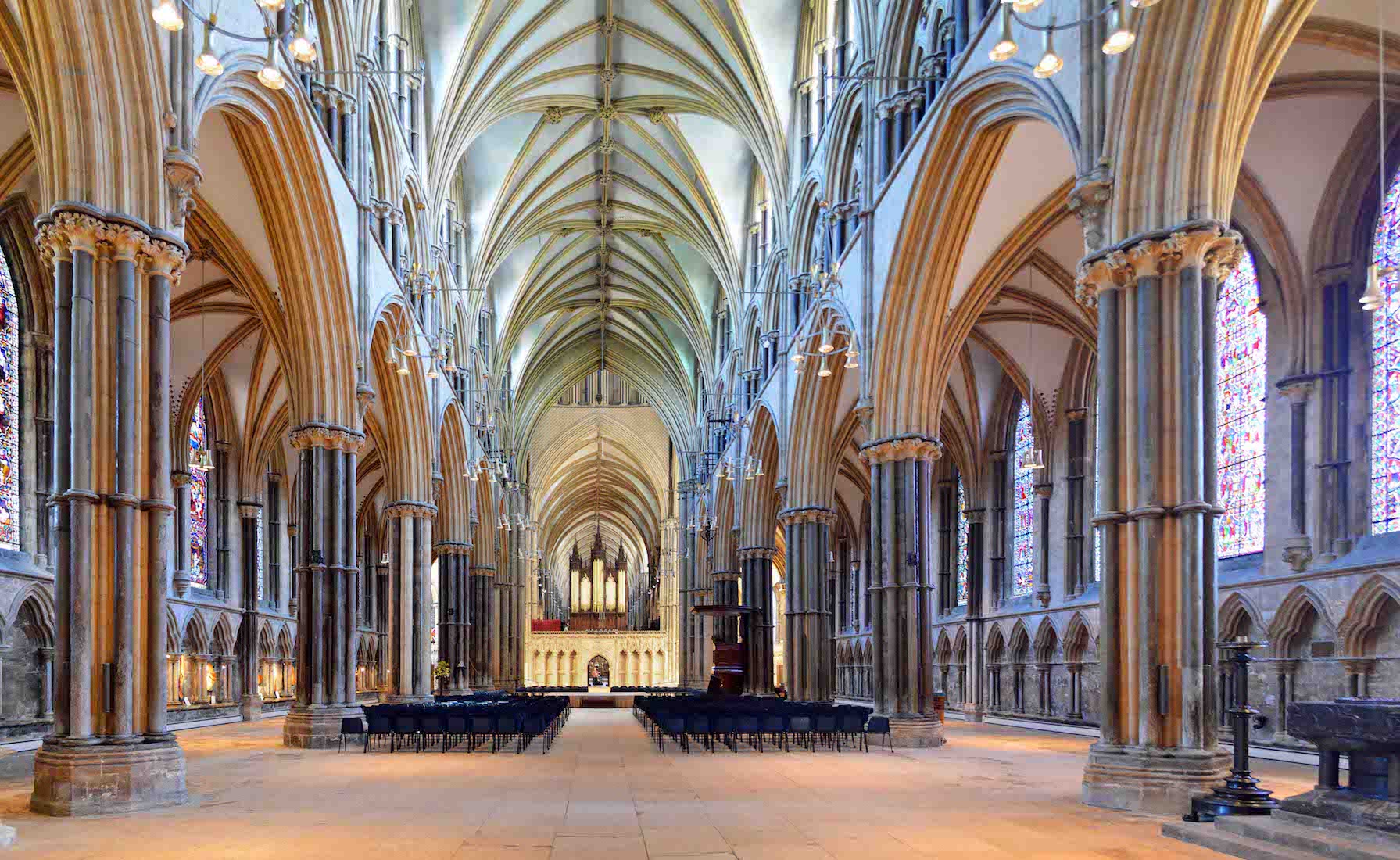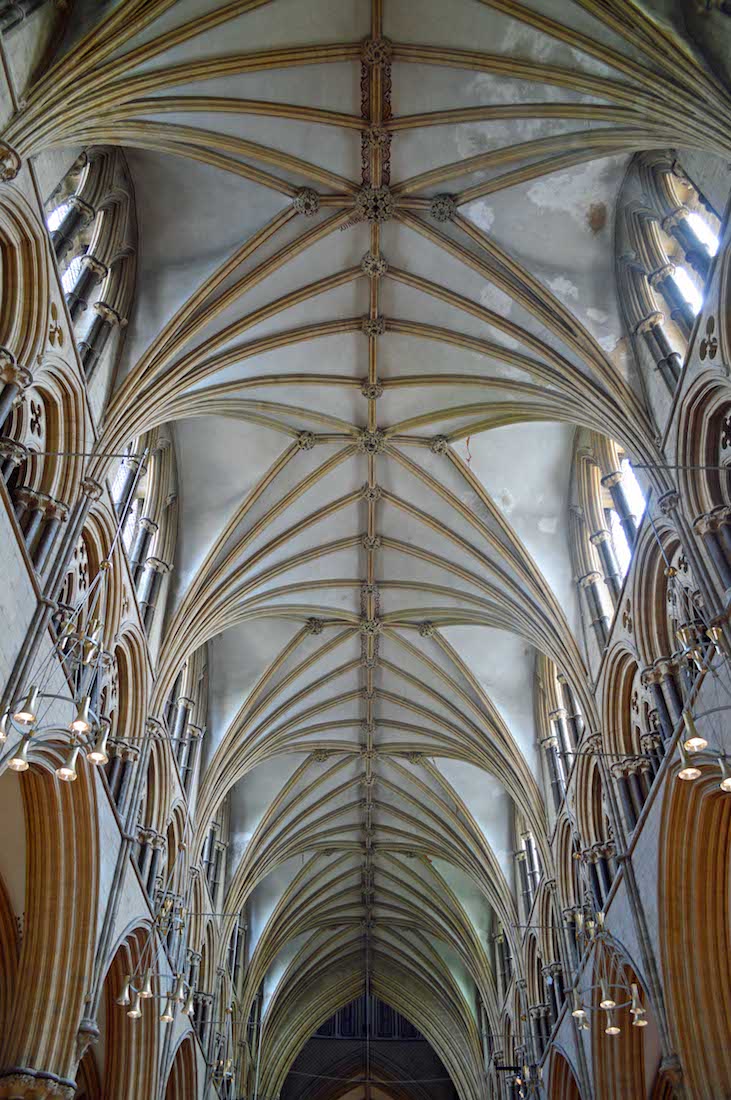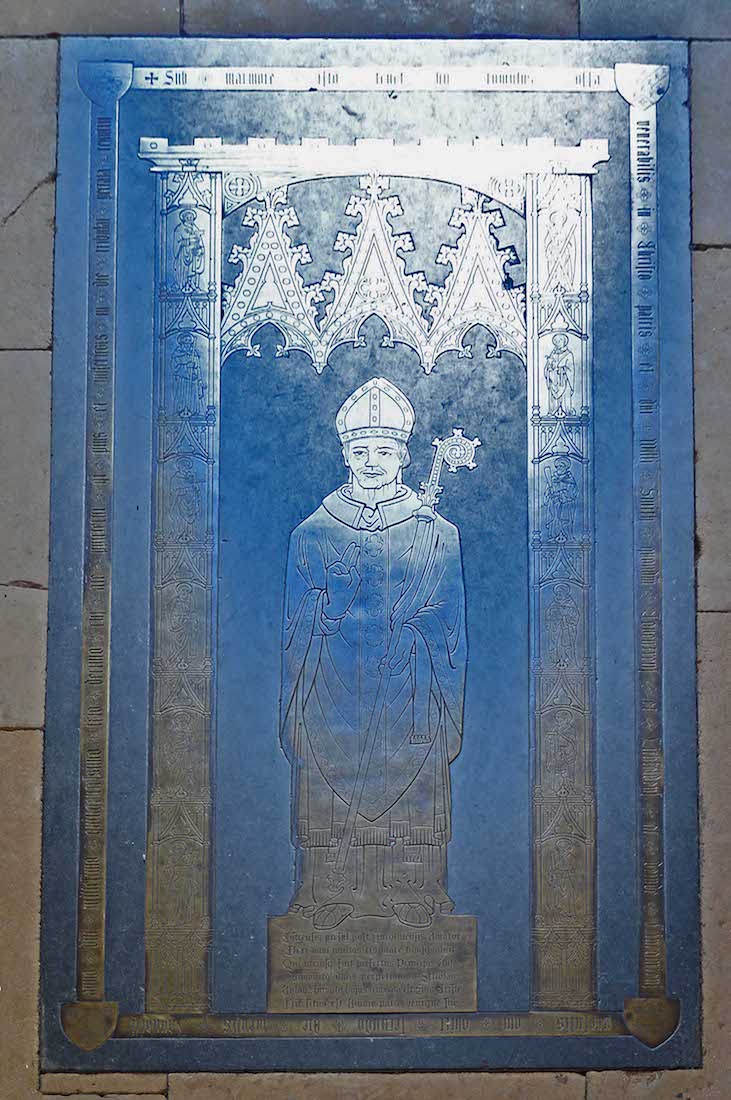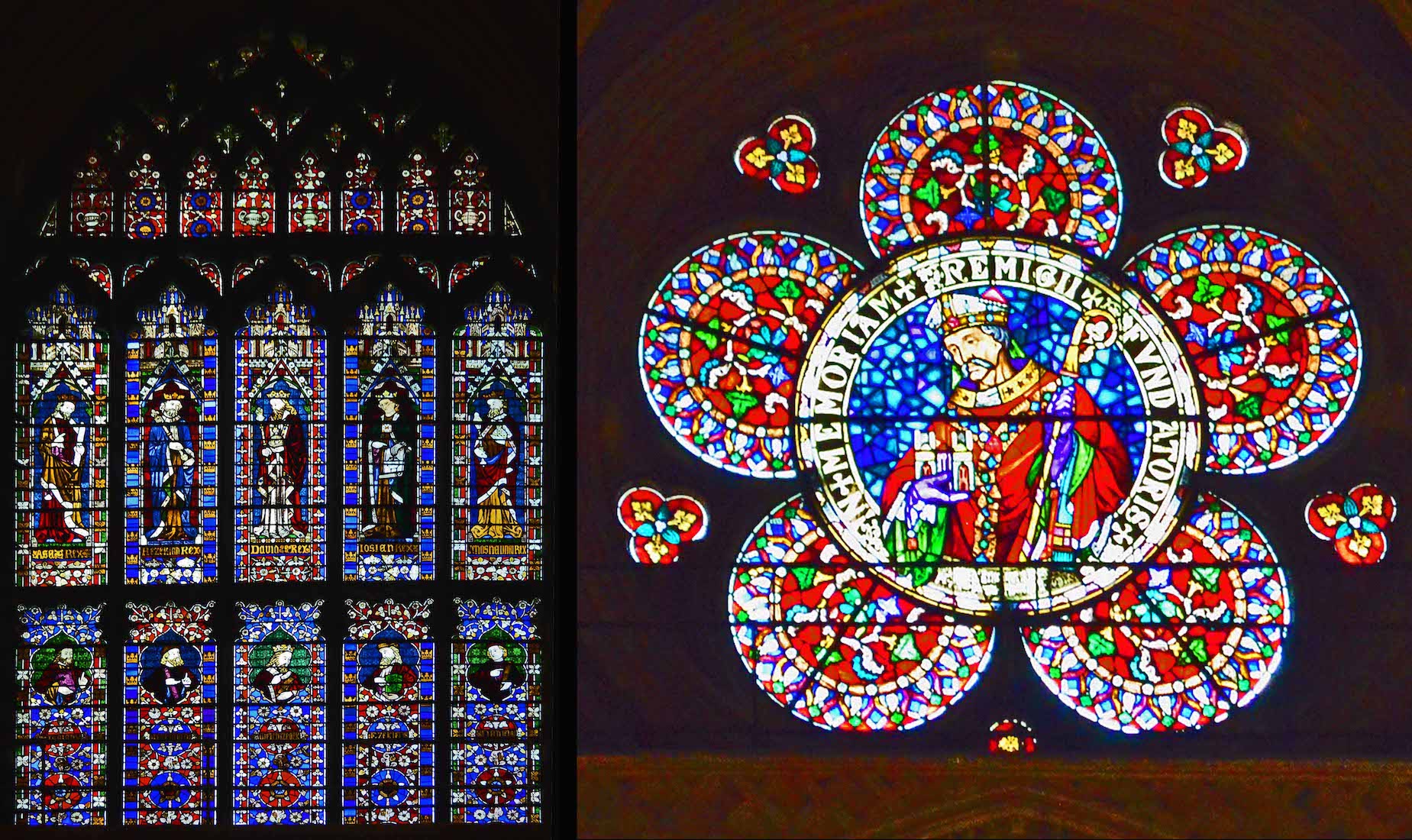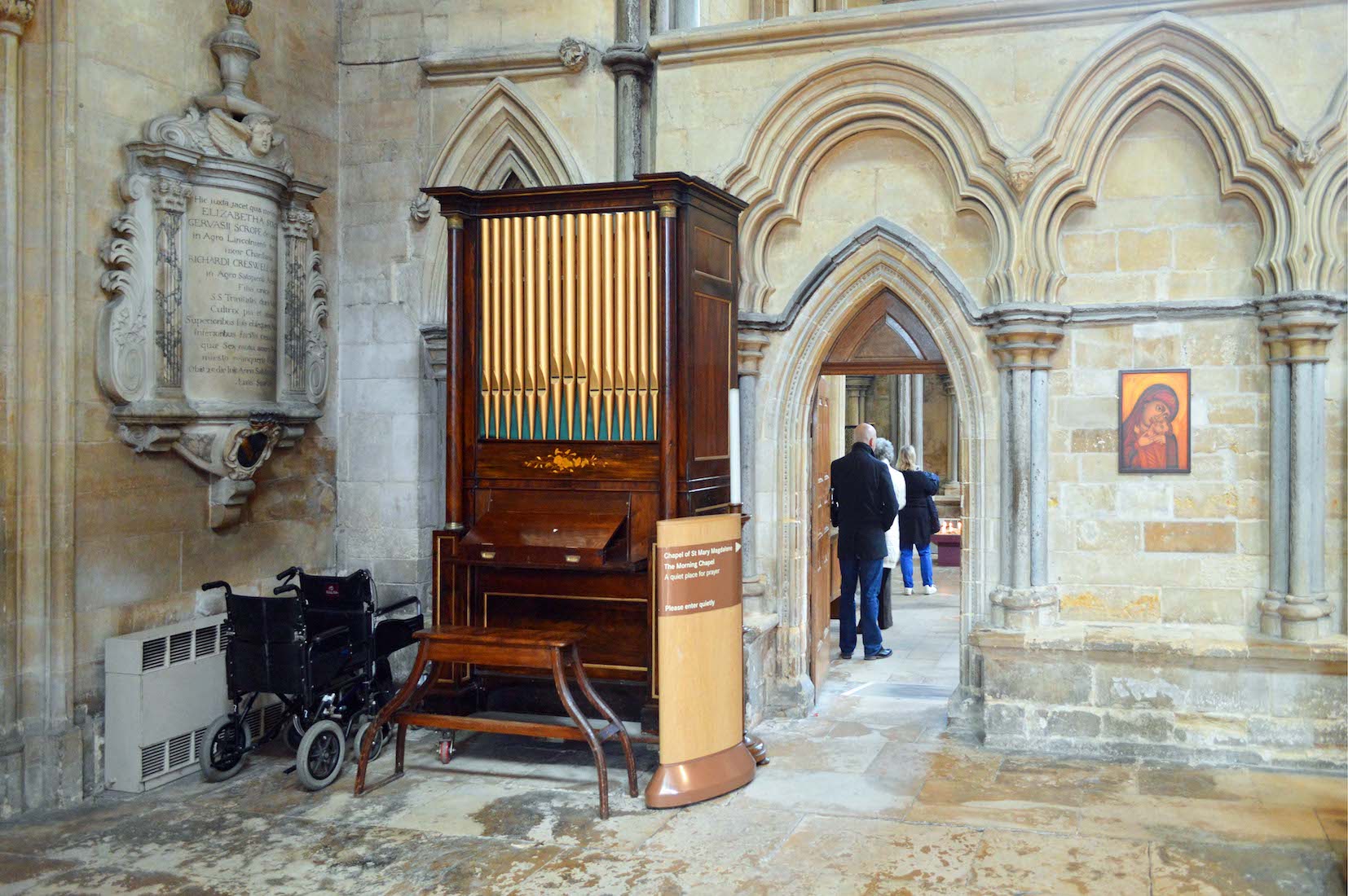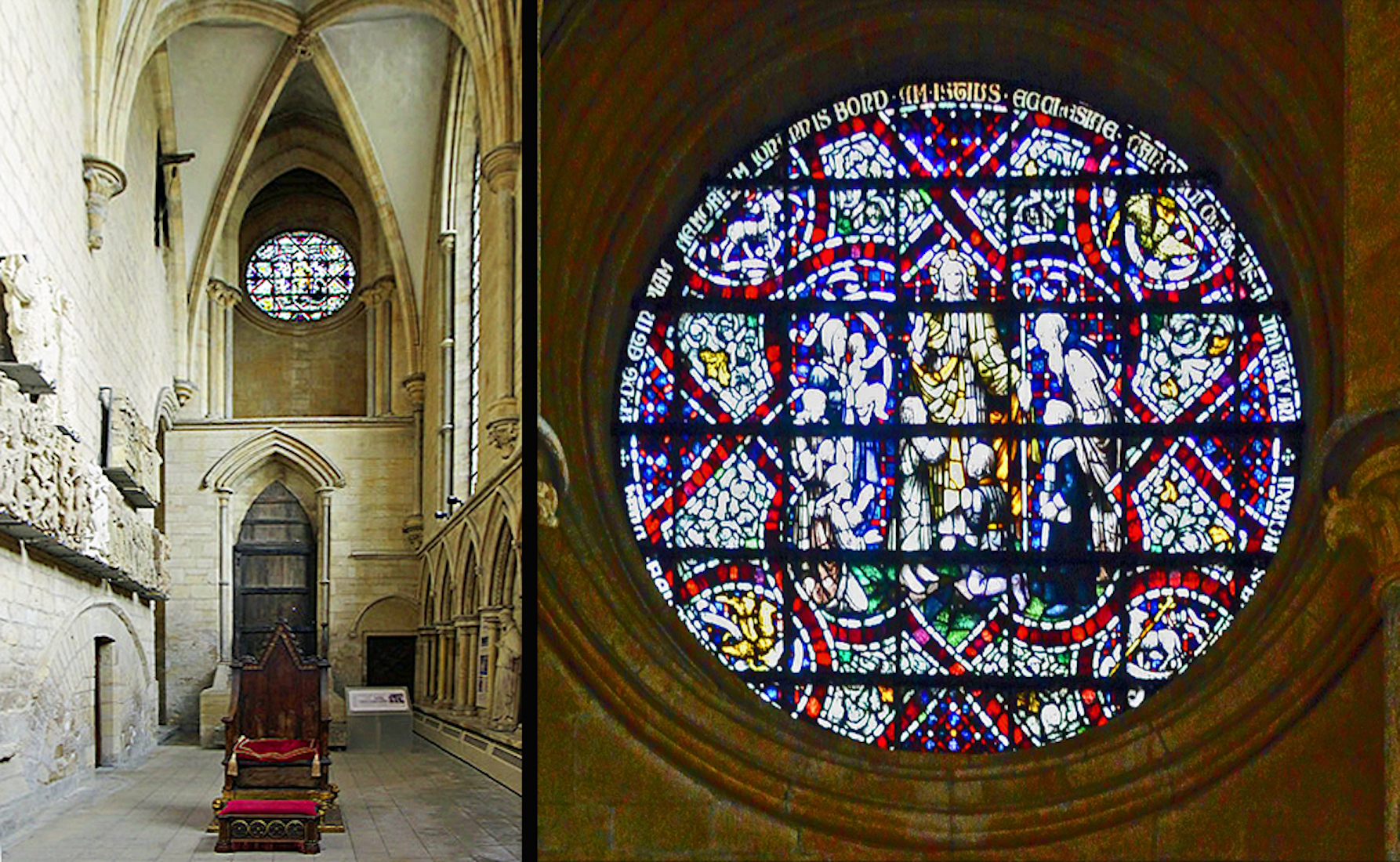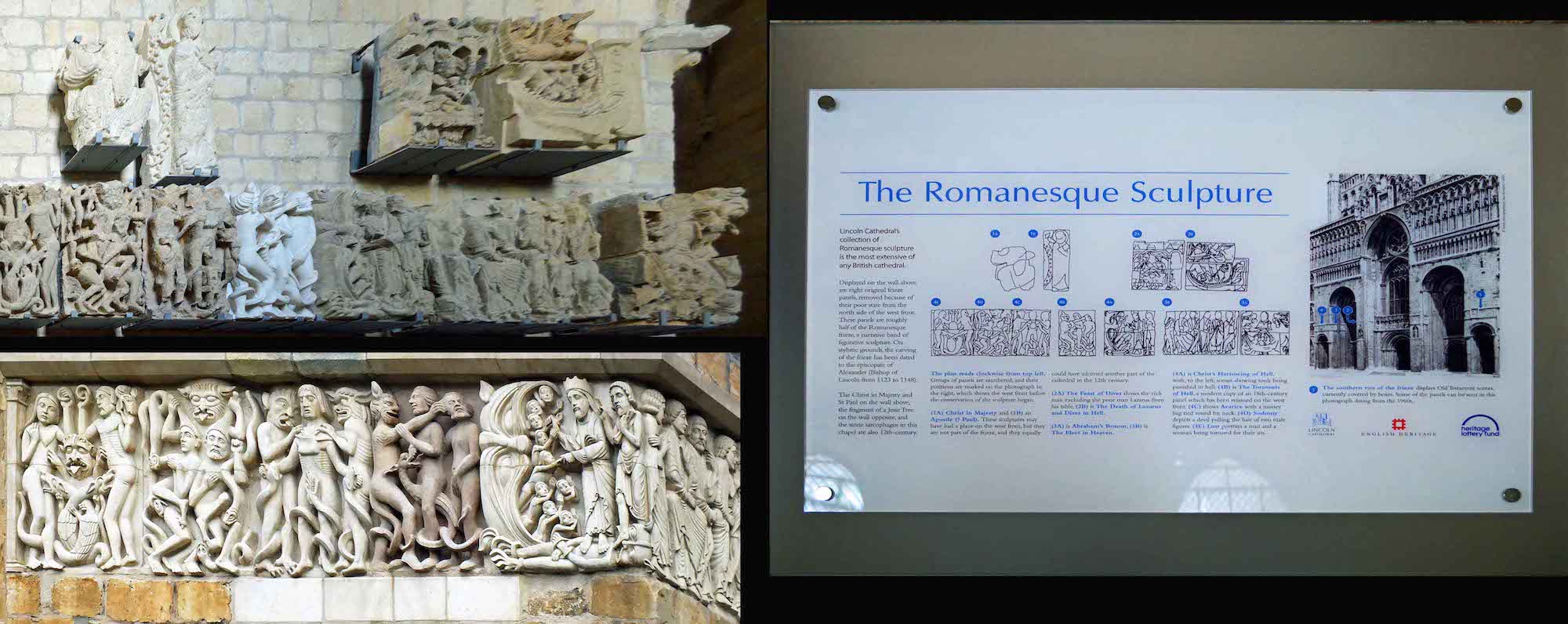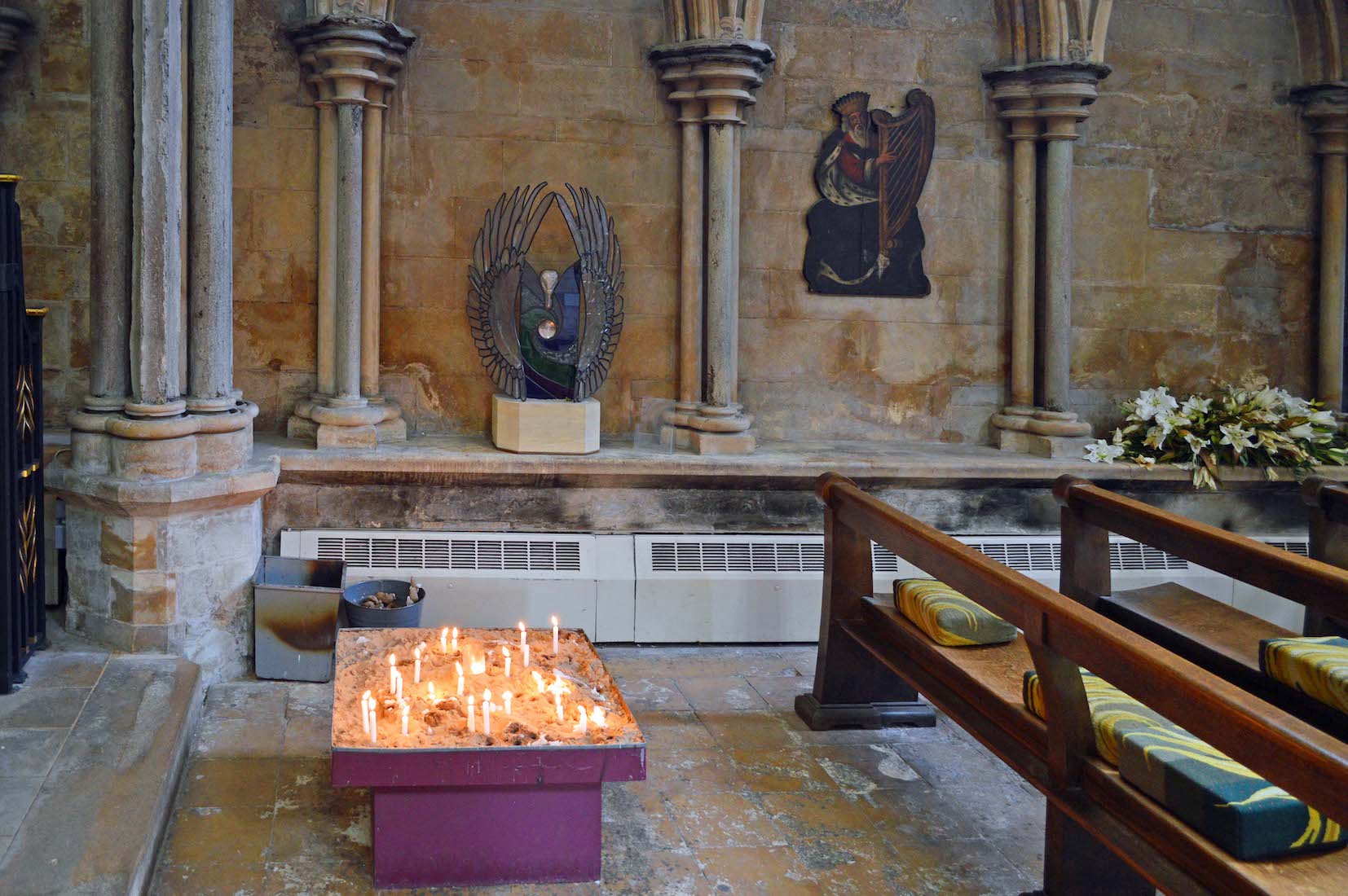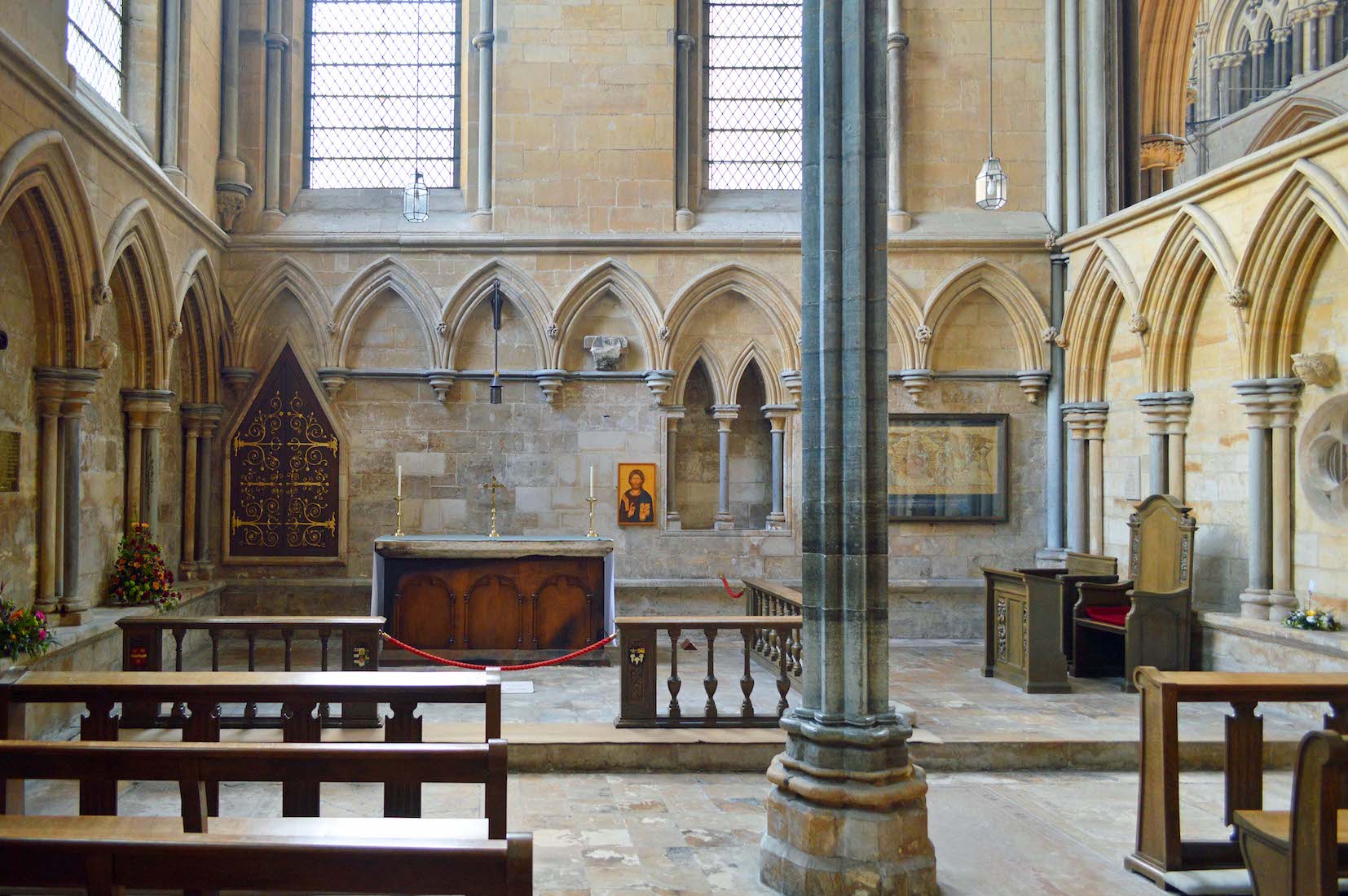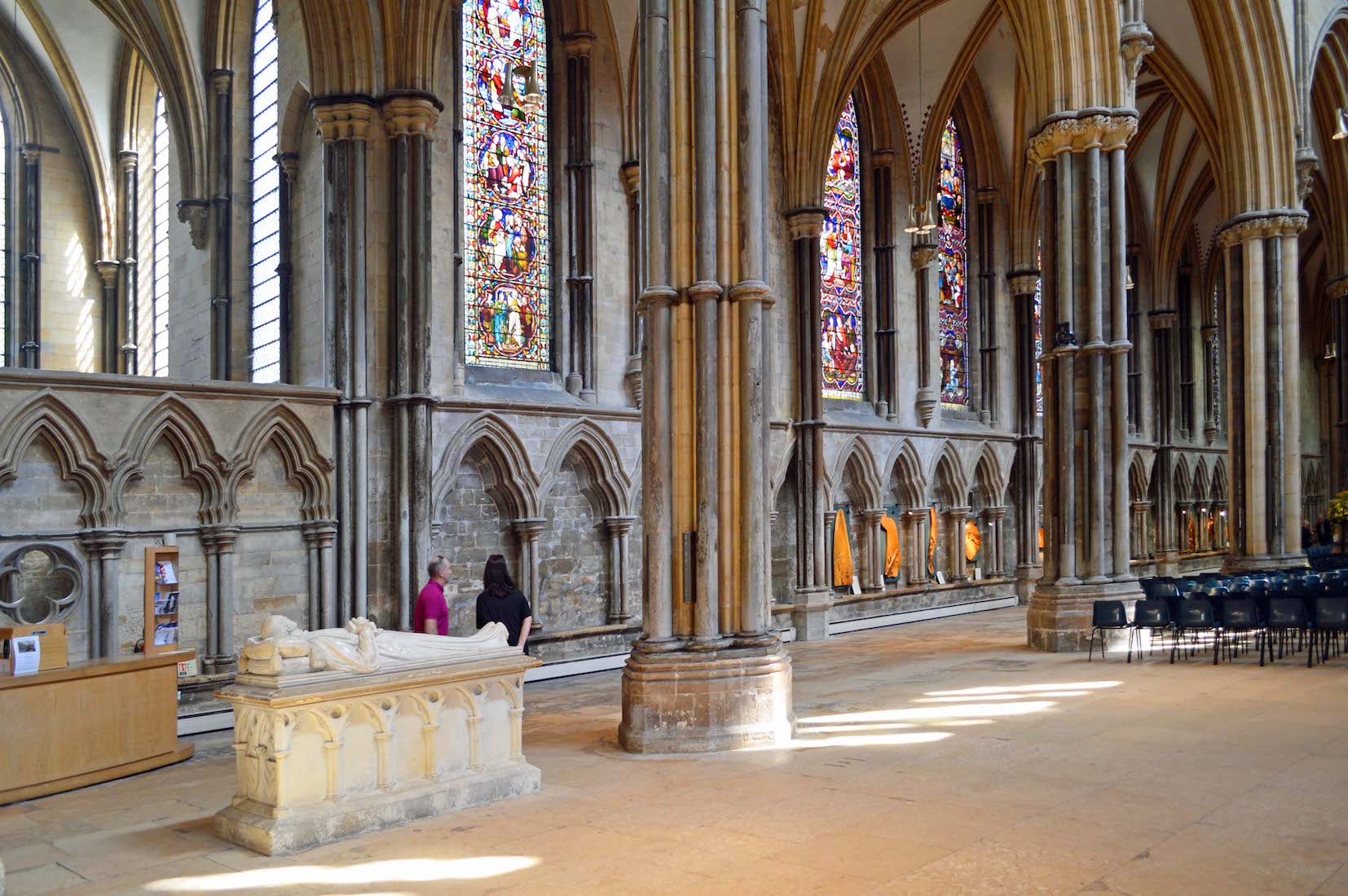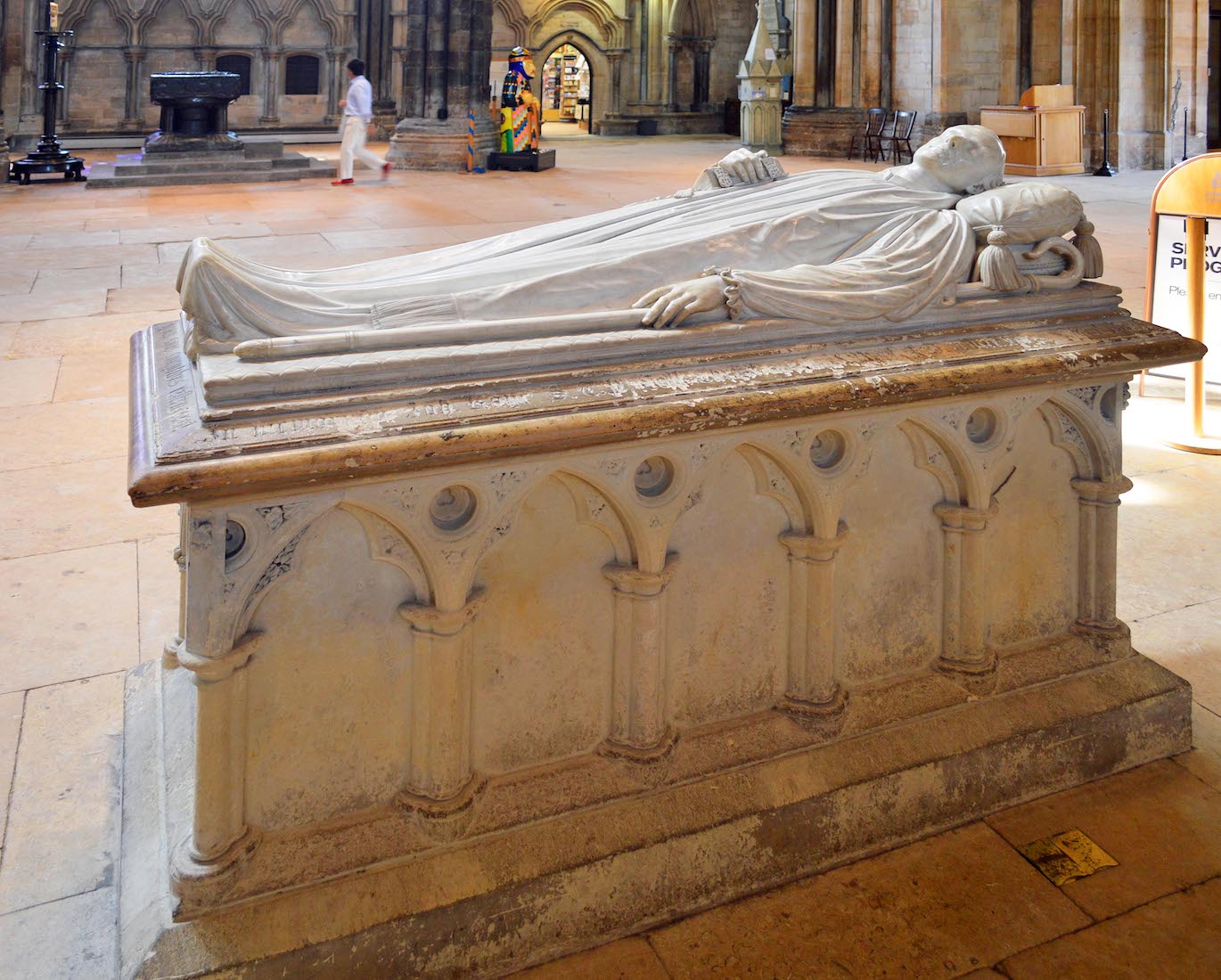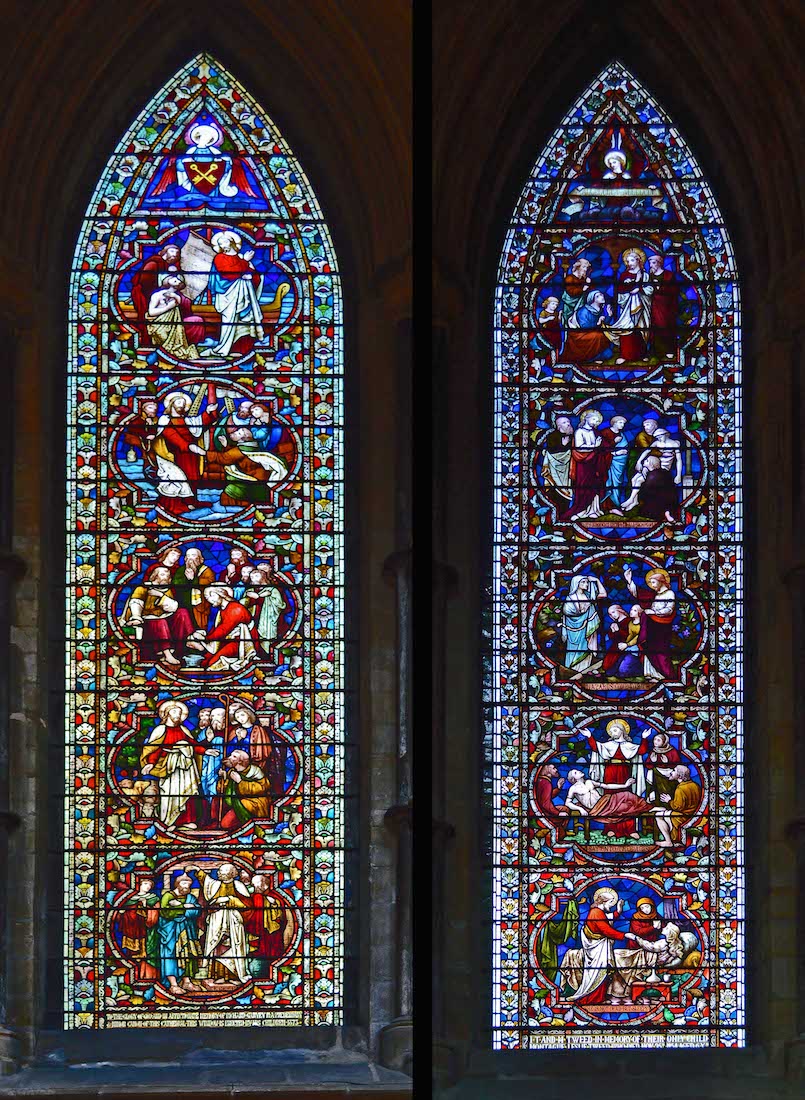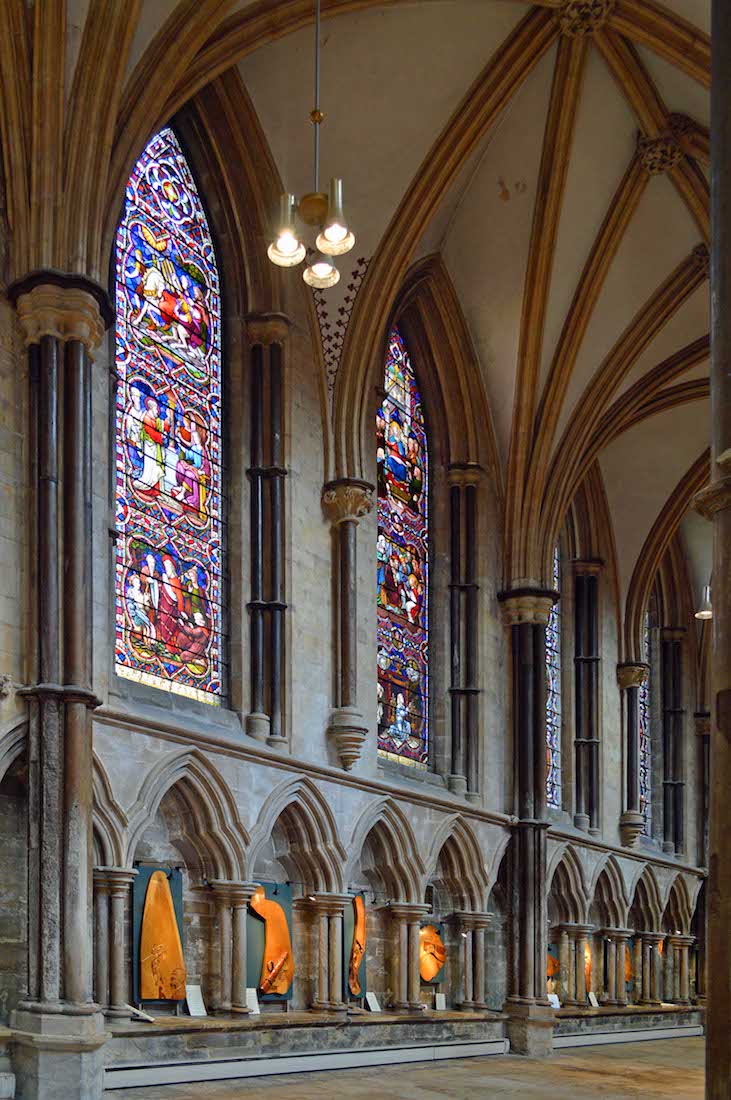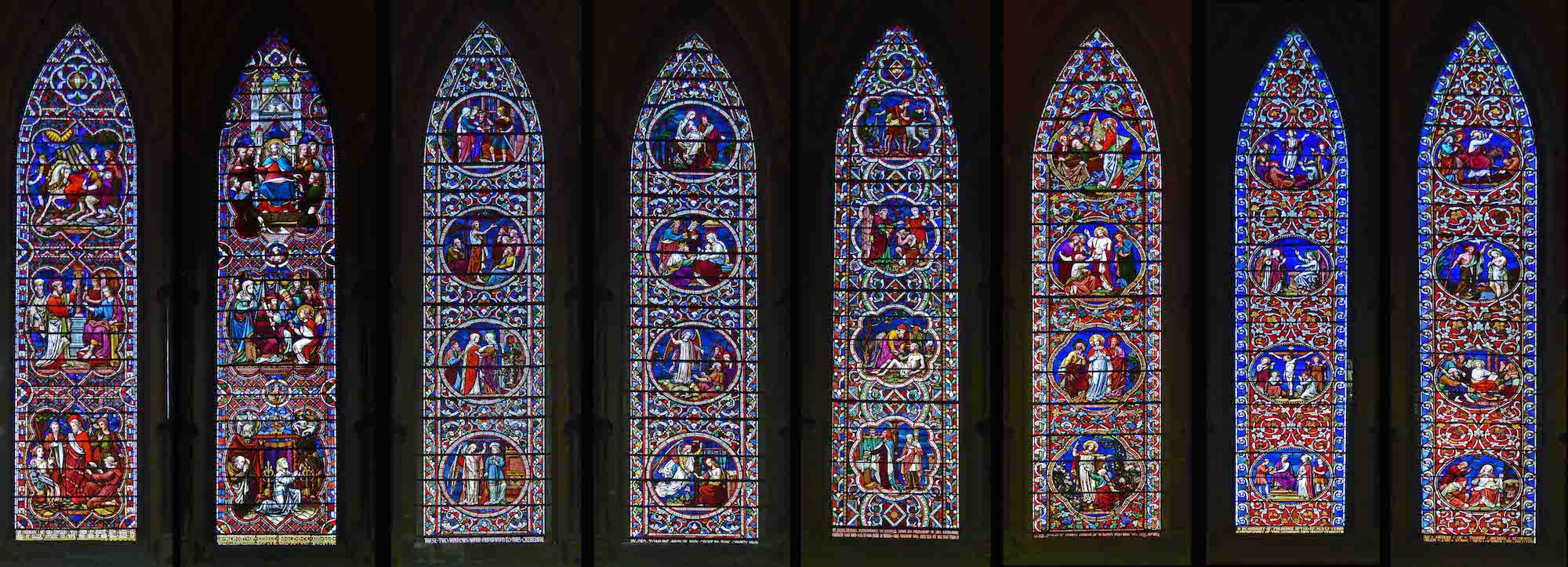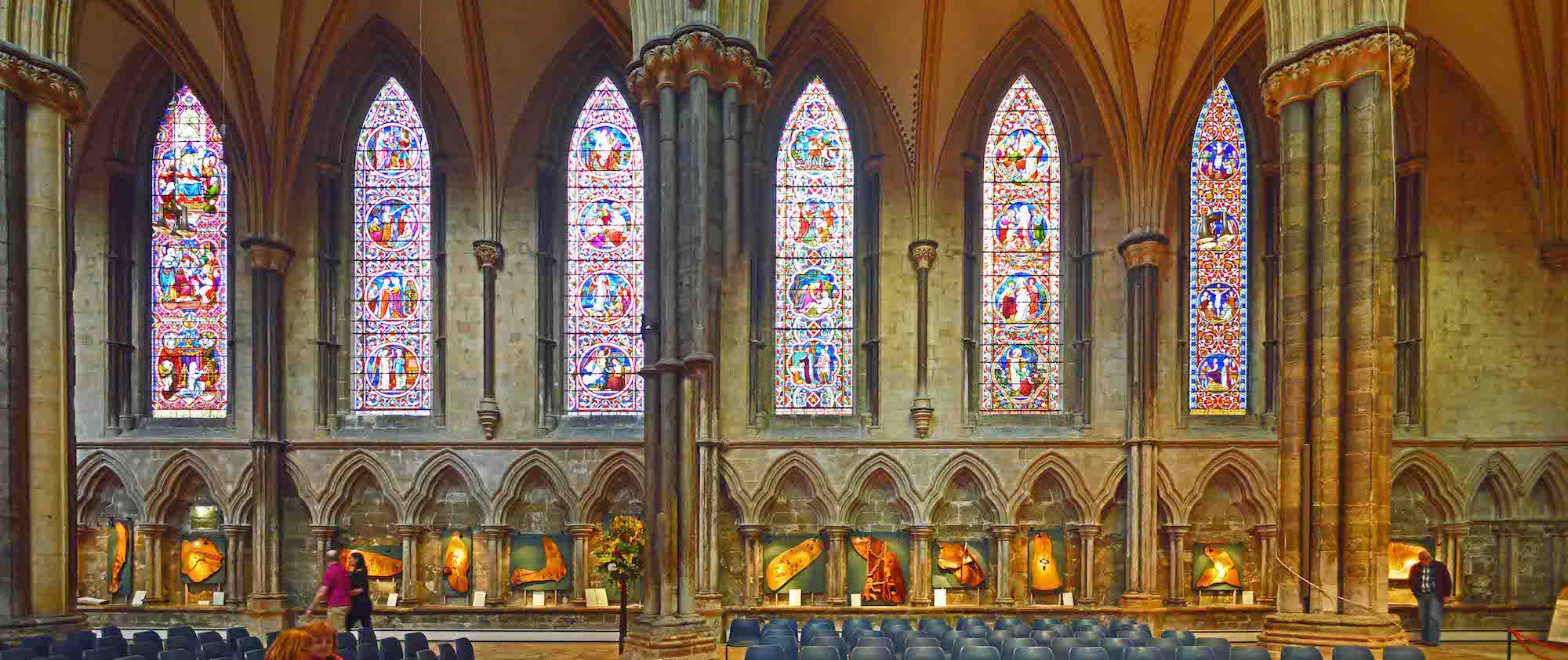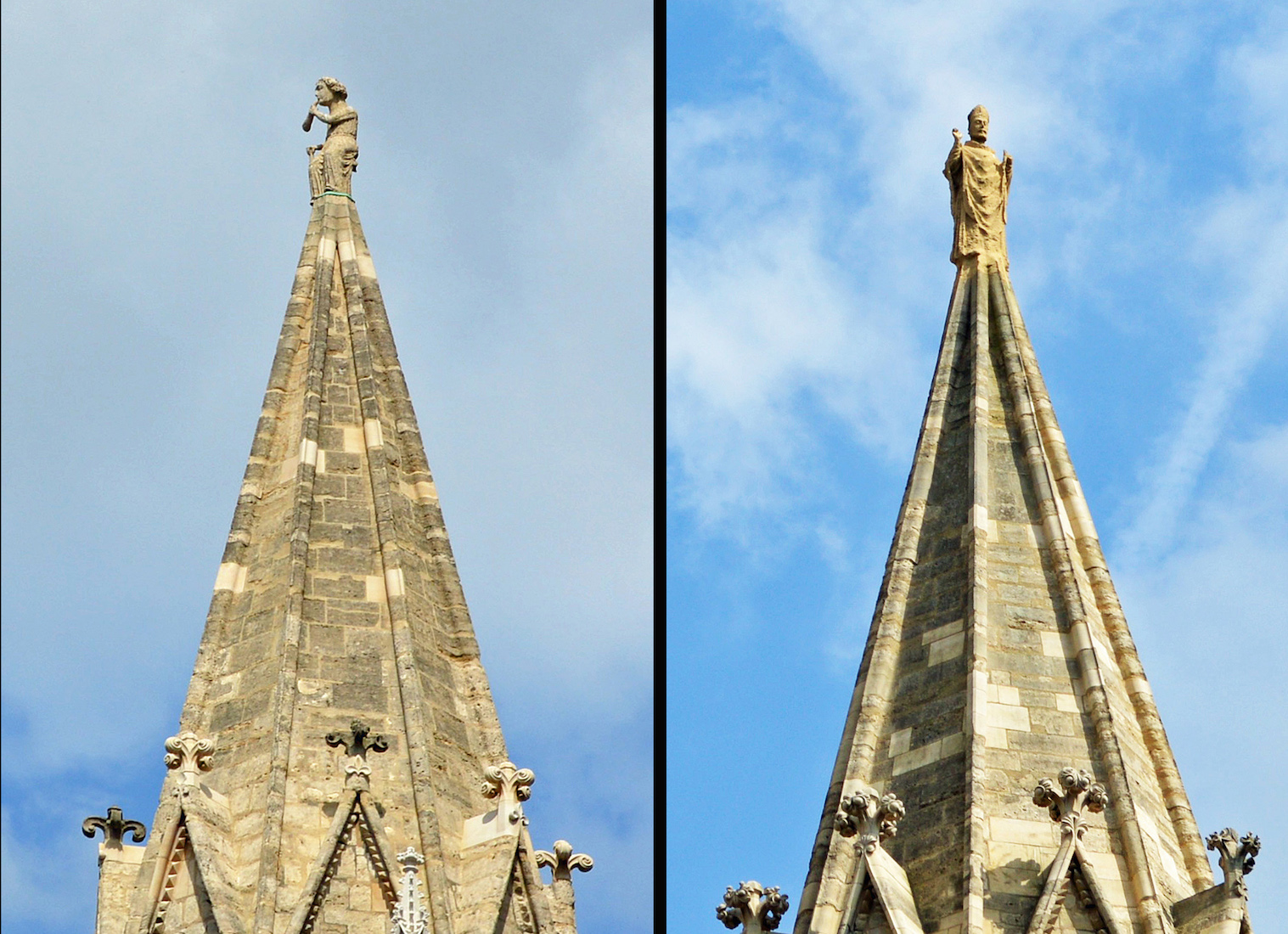
The Cathedral Restoration about the year 1200, is said to have been paid for by local people including famously the swineherd of Stow who gave his meagre life savings towards the great work. His statue sits on the Northwest turret opposite that of St Hugh on the Southwest. St Hugh was consecrated Bishop of Lincoln on 21 September 1186. As a bishop, he was exemplary, constantly in residence or travelling within his diocese, generous with his charity, scrupulous in the appointments he made. He raised the quality of education at the Cathedral school. PLAN
22. ABOVE THE WESTERN DOORS

The beautiful ‘Gallery of Kings’ above the West door dates from the time of the construction of the Gothic parts of the cathedral. It cuts rather incongruously through the top of the ornate Norman arch that frames the huge doorway. The richly carved kings sit under ornate Gothic canopies, drawing attention away from the earlier carvings around the door. A bishop stands on either side of the doorway.
23. CLOISTERS
To complete our tour of the exterior of the Cathedral, we walk through the nave and out to the Northern cloister area. The cloister is an interesting feature, given that Lincoln Cathedral was never a monastic house. Unusually, it is on the North side of the building and its passages are in a recognisably 13th-century style, with carved wooden bosses. Sir Christopher Wren added a colonnade in the 17th century.
24. NAVE
We return inside the cathedral, and stand at the West end of the nave. This is a grand space with Gothic arches striding towards the gold choir screen and organ. The supporting pillars comprise smaller columns of black Purbeck marble. There are beautiful stained-glass windows on either side and to our immmediate right we see the old font.
25. NAVE ROOF
Above us, the ceiling is made up of delicate fan vaulting. The joins are covered with decorated bosses, but the distance, and the lack of any colour or gilding, makes the patterns indistinct. Above us, on either side, is a triforium level, and a row of plain clerestory windows.
26. BISHOP SMITH FLOOR PLATE
Just inside the West doors is this brass floor plate in memory of Bishop William Smith who died in 1540. Brasenose College, Oxford, was founded by Smith.
27. WEST WINDOW
The West window in the Cathedral was created by Frederick and Augustus Sutton in 1859. It depicts various Old Testament Kings and Prophets. Shown are Kings Asa, Hezekiah, David and Josiah, and prophets Isaiah, Jeremiah, Melchizedek and Ezekiel. The cinquefoil rose window shows the builder of Lincoln Cathedral, Bishop Remigius de Fécamp.
28. NORTH WEST CORNER
In this corner of the nave, next to a small organ and a memorial to Elizabetha Gervase Scrope, is the entry to a chapel. This is called the Chapel of St Mary Magdalene or the Morning Chapel, and is set aside as a place of prayer.
29. CIRCULAR CHAPEL WINDOW
If we turn left on entering the morning chapel, we find ourselves facing into a small adjunct chapel. In the centre is an ecclesiastical chair, and behind this a round stained glass window and two doors. The central door leads outside through the West wall, the right door is an entry to the NW turret. The window shows Christ with a shepherd’s staff ministering to a crowd of mainly women and children. To the left on the wall is a frieze.
30. FRIEZE
Perhaps the most precious of all the Norman-era carvings at Lincoln are the horizontal friezes. Dating from approximately 1123-1148, these friezes are less abstract in design than the carvings around the doorways – instead of patterns or strange beasts, they show the grisly fate that sinners could expect to meet after death. At top left we see some of the original friezes, and below, a photo of the new replacement frieze on the outside West wall.
31. REAR CHAPEL
Turning right we find ourselves facing a small shrine with a place for lighting candles. I do not know the significance of the angelic figure.
32. MORNING CHAPEL
A number of seats in the morning chapel face eastwards towards a platform on which sit an altar, and a priest’s chair and desk. The windows are clear latticework glass, and on the facing wall are several items including at left what appears to be an aumbry.
33. FRONT DETAIL
The aumbry doors are elaborately decorated. The simple altar has on it a gold cross and two candlesticks. Behind is a small icon of Christ. On the wall at right is a tapestry depicting the Risen Christ surrounded by worshipping angels. An unusual quatrefoil ‘window’ opens to the nave.
34. NORTH NAVE WALL
We leave the morning chapel and return to the nave. We proceed to investigate this North wall. Immediately in front of us is a tomb and effigy. Beyond are some stained glass windows, and in the distance some illuminated items of interest!
35. TOMB AND EFFIGY
The effigy is of a Bishop holding a pastoral staff in his left hand and a Bible in his right. In fact it is Bishop Kaye. John Kaye (1783 –1853) was an English churchman. He was Master of Christ’s College from 1814 to 1830, Vice-Chancellor of Cambridge University in 1814, Bishop of Bristol from 1820 to 1827 and Bishop of Lincoln from 1827 until his death. He was elected Fellow of the Royal Society in 1811. His recumbent effigy is by Richard Westmacott.
36. NORTH NAVE WINDOWS
Almost all the scenes depicted in these first two windows are from the life of Jesus. Scenes in the right window are labelled, and show Jesus healing people or raising the dead. The top four scenes in the left window show the call of Jesus to Peter and Andrew, Jesus rescuing Peter, Jesus washing the feet of the disciples, and Jesus as a shepherd. The bottom scene is something of a mystery!
37. CONTINUING DOWN THE NORTH NAVE AISLE
Continuing down the North nave aisle, we come to more stained-glass windows, and a series of lit-up displayed items below.
38. NORTH NAVE WINDOWS
These are the eight remaining North nave windows. They include scenes from the book of Acts, images of Christ and the call of Samuel, scenes relating to John the Baptist and the Nativity, parables of Jesus, and scenes of the crucifixion, resurrection and ascension of Christ.
39. NORTH NAVE AISLE – EASTERN END
At the Eastern end of the North nave aisle there is a display of 15 wood carvings below the stained-glass windows. These are the 15 stations of the cross, called here the Forest Stations – a series of sculptures made in wood by William Fairbank. The name refers to the sculptor’s love of timber and his concerns for the preservation of forests throughout the world. The sculptures tell the story of the traditional account of Jesus Christ’s death, depicting each stage, or station, along the road to the place of crucifixion. The images are formed within the natural and carved shapes and colours of different timbers.
40. STATIONS I – VI
From the left we have: I. Jesus, a man of truth, is condemned to death by the crowd through their government. II. The Truth is beaten and flogged, and roped to the execution beam. III. He falls under pressure from without. IV. He is helped by his mother. V. He is helped by Simon of Cyrene. VI. He is helped by Veronica, who wipes his face. ...



